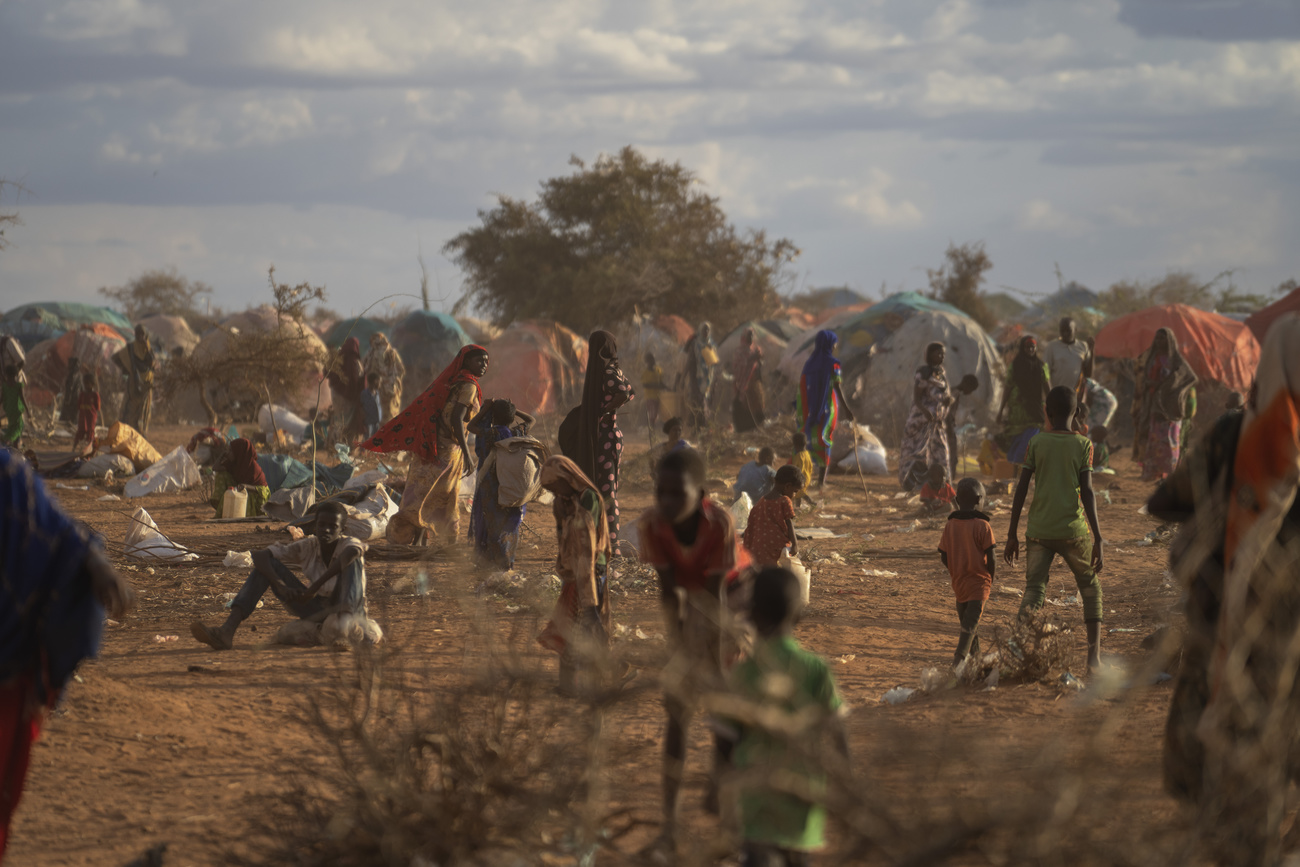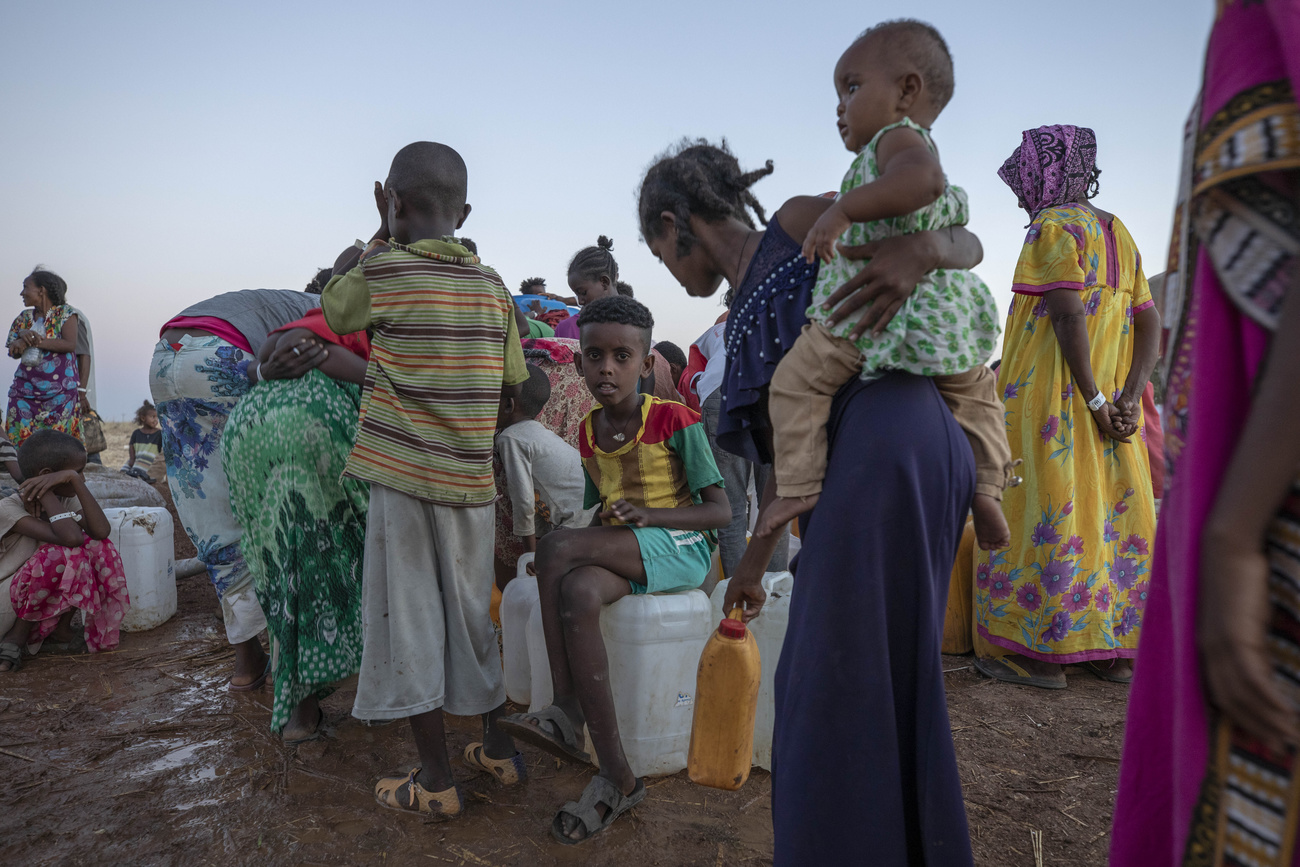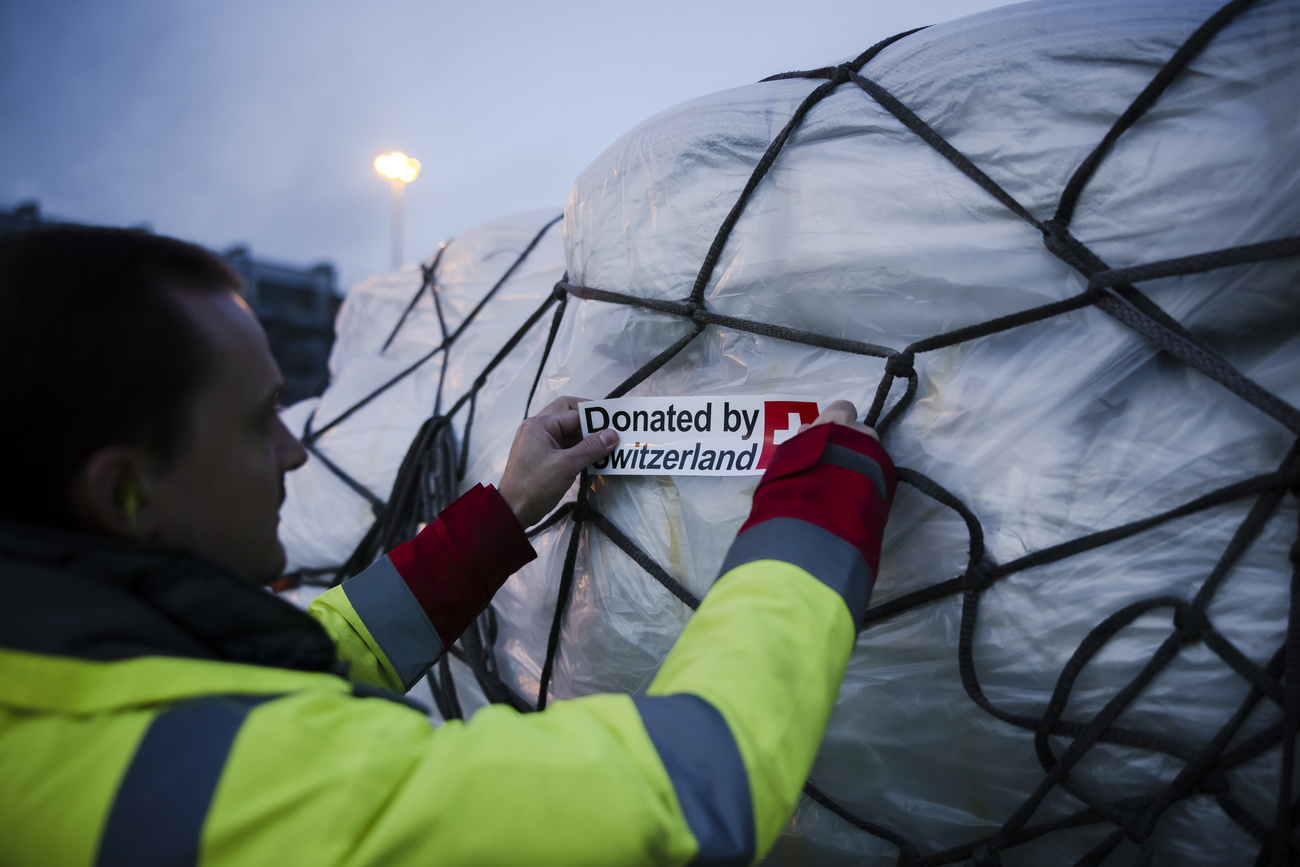UN aid system stretched thin as needs reach record high

The United Nations expects humanitarian needs to soar next year but is facing a widening funding gap which impairs its ability to respond to unprecedented crises.
In 2022, extreme droughts and floods, the war in Ukraine, a lingering pandemic and new diseases outbreaks have fuelled hunger, displacement and pushed millions of people across the world in a desperate situation.
In its annual overviewExternal link of projected humanitarian needs released on Thursday, the United Nations estimates that it will need a record-breaking $51.5 billion (CHF48 million) in 2023 to respond to immense humanitarian needs, a $10.5 billion increase compared to last year’s projections for 2022.
“It’s a phenomenal number and it’s a depressing number,” the UN relief chief Martin Griffiths told journalists at a press conference in Geneva.
The UN Office for the Coordination of Humanitarian Affairs (OCHA) said 339 million people in 68 countries will require assistance next year. That is roughly 4% of the world’s population, a proportion that has more than doubled over the last four years. According to the UN, more than 100 million people are now displaced worldwide, over 220 million people will face acute food insecurity by the end of the year, and 45 million risk starvation.
The UN’s appeal covers response plans through which the organisation and its partners aim to assist 230 million people in 2023. It does not include the plans of other international NGOs such as the International Red Cross and Red Crescent Movement or Médecins Sans Frontières (MSF). Separately, the ICRC on Tuesday launchedExternal link an appeal for CHF2.8 billion to fund its activities in 2023. The IFRC and its network of national organisations said they will needExternal link CHF3.2 billion next year.
The “most concerning trend” is the growing funding gap – between humanitarian needs and money raised – which has never been as wide as in 2022, warned Griffiths. As of mid-November, the UN had received $24 billion, leaving 53% of its planned operations globally unfunded. This situation has forced aid agencies to make difficult decisions about who to assist.
Addressing the gap
“We need more donors from more affluent countries to step up and help support people in need. And that funding needs to be long-term and flexible so aid organisations can operate effectively,” says Jan Egeland, secretary general of the Norwegian Refugee Council (NRC). According to him, the generosity of the international community towards the humanitarian crisis in Ukraine must be extended to forgotten crises elsewhere.
UN-backed plans covering the emergency response in Ukraine and the refugee crisis in neighbouring countries are among the organisation’s largest and best funded. As of November 21, the $4.3 billion Ukraine response plan was 73% funded, as was the $1.3 billion refugee plan for Ukraine’s neighbours. Meanwhile humanitarian plans for Ethiopia, Sudan, Syria were all less than 50% covered.

More
How the war in Ukraine fuels underfunding for other crises
“Growing needs and skyrocketing prices are putting ever more pressure on aid organisations to deliver impactful and innovative programmes in a cost-effective manner,” says Egeland, who also served as UN relief chief between 2003 and 2006.
More cost-effective ways of working exist, aid experts say. They include anticipatory action, which aims to make funding available ahead of predictable climate emergencies so local communities can prepare and avoid preventable harm. Cash transfers, which can be made online without relying on pricey truck deliveries and empower people on the ground, are another tool UN agencies increasingly use.
But the pressure of rising food and fuel prices and cuts in development aid budgets are pushing humanitarian organisations in new directions. “Development funding and structural support can do things better than us, like providing basic services,” Griffiths said. If countries refuse for political or economic reasons to support this work, the burden is passed on to humanitarian actors. The Black Sea grain deal that allowed blocked Ukrainian food exports to resume and lowered prices on international markets, which Griffiths helped negotiate, is another illustration of the variety of actions aid agencies must take.
Reforms
“The humanitarian system cannot cope anymore with the scale, intensity, and sometimes unpredictability of today’s crises,” says Karl Blanchet, director of the Geneva Centre of Humanitarian Studies. “More money for humanitarian aid is needed,” he adds. But according to him, changes in the way the system operates are also required. Though he does “not question the great work” of international humanitarian organisations – such as UN aid agencies – Blanchet argues more funding must go to national and local NGOs directly.
As part of sector-wide reforms initiated in 2016, members of the Inter-Agency Standing Committee (IASC) – a forum of heads of UN and non-UN aid agencies – have committed to channelling at least 25% of international humanitarian aid to local and national actors, directly or indirectly, by 2020. Last year, only 1.2% ($302 million) of total international humanitarian assistance funding was given directly to local and national actors, according toExternal link Development Initiatives (DI), an NGO based in the United Kingdom.
Going forward, Griffiths, who also chairs the IASC, said the humanitarian system would need to prioritise “genuine relations” with affected communities to “allow those people to tell us what they need and to give us instructions on how to spend the money that is dedicated to them”.
Experts say local aid agencies are best suited to respond to emergencies but do not get enough funding nor training. Political considerations and risk-aversion are major reasons why donors are often reluctant to give money to local and national actors directly.
“We need to give them the means to respond quickly and adequately while respecting humanitarian principles. That would be a big shift for the humanitarian system, which would be more efficient and more responsive,” says Blanchet.
Edited by Virginie Mangin

In compliance with the JTI standards
More: SWI swissinfo.ch certified by the Journalism Trust Initiative














You can find an overview of ongoing debates with our journalists here . Please join us!
If you want to start a conversation about a topic raised in this article or want to report factual errors, email us at english@swissinfo.ch.